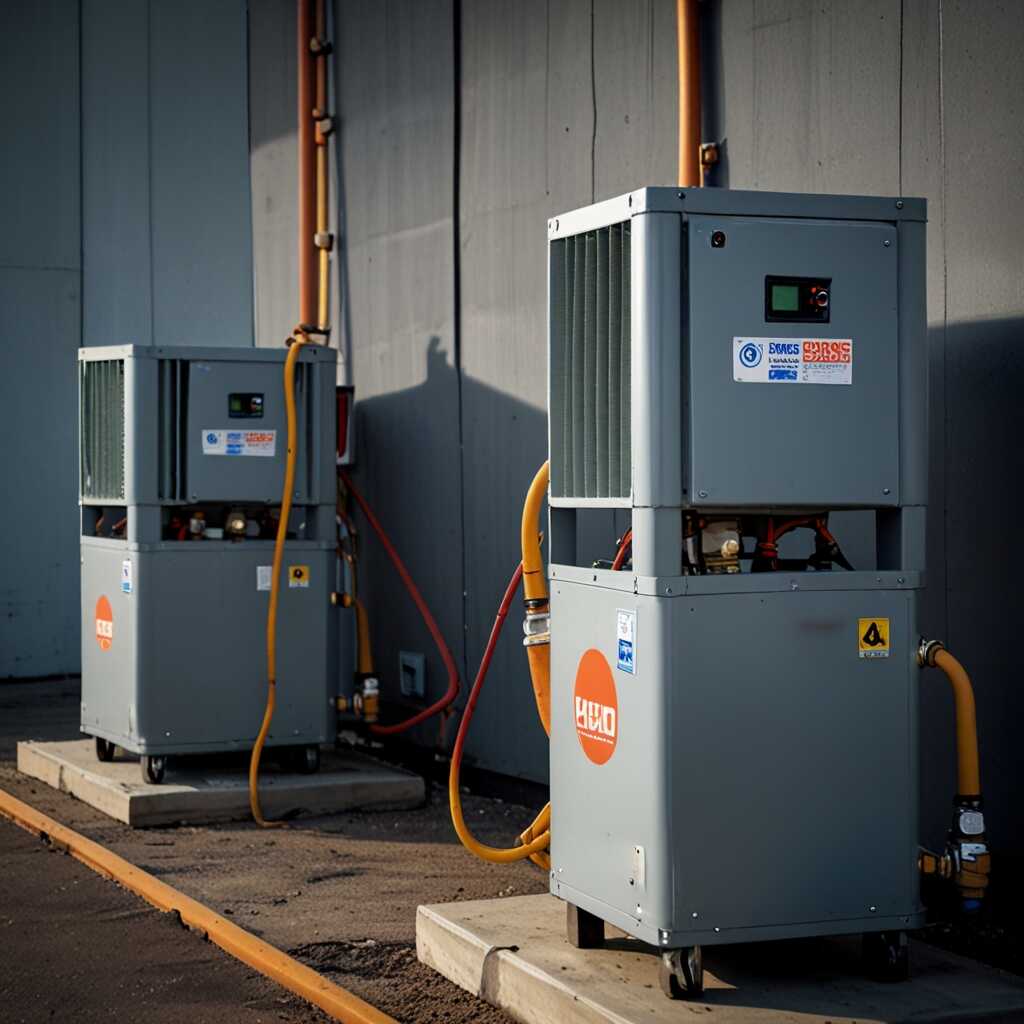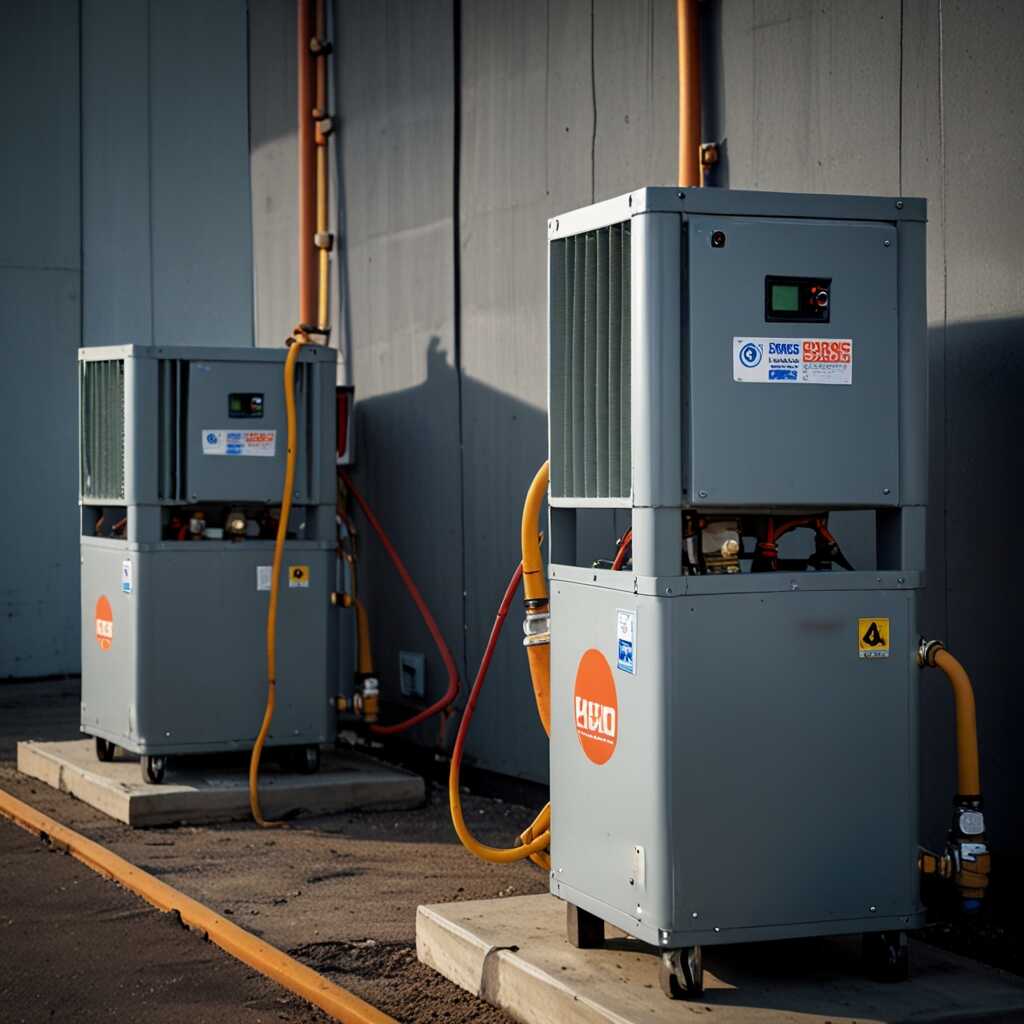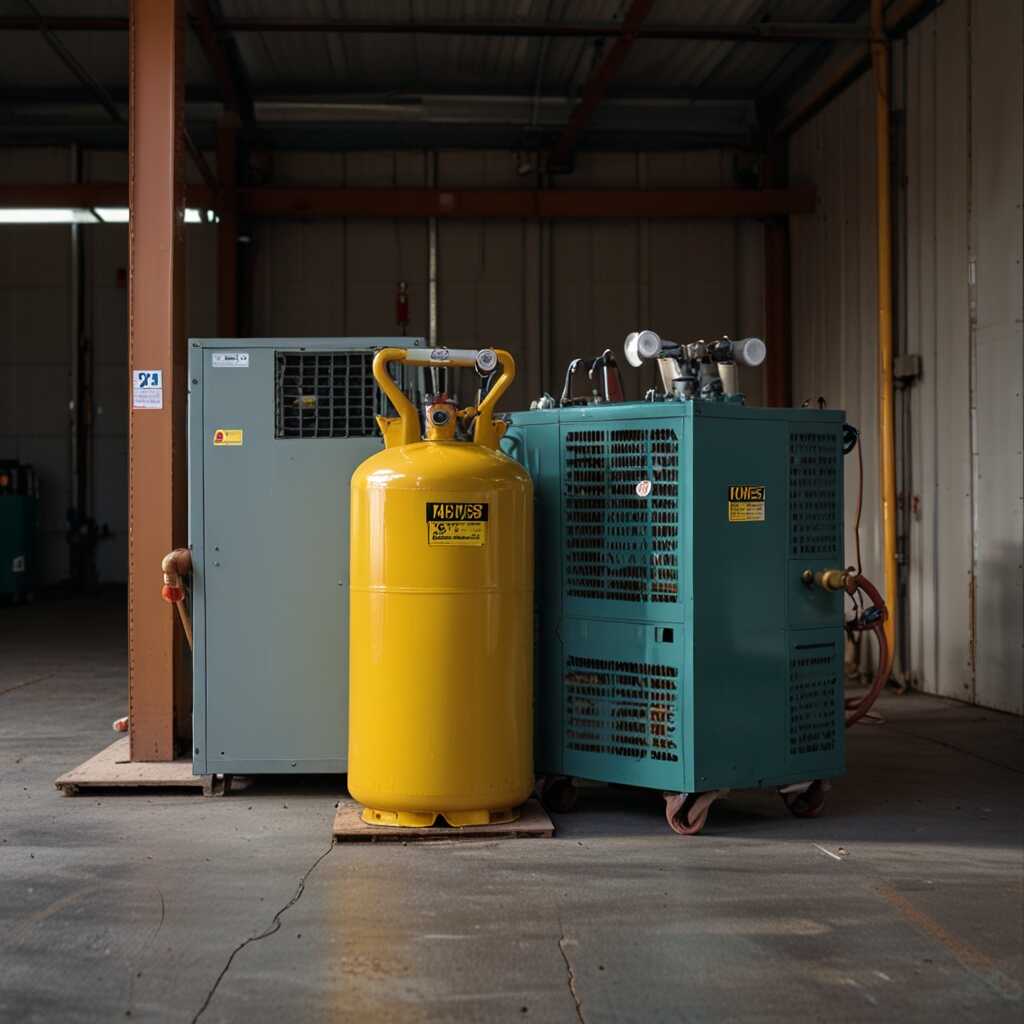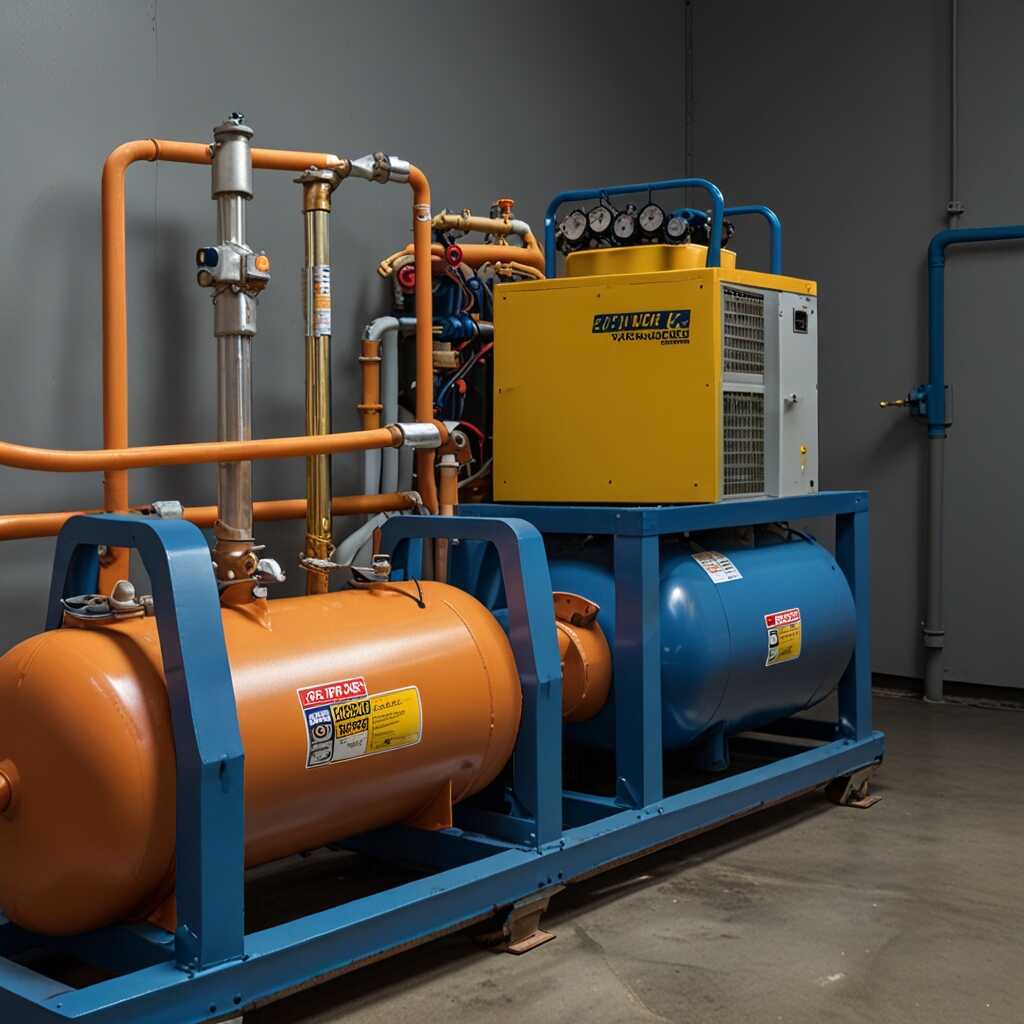Push-pull refrigerant recovery machines are essential tools for effectively managing flooded systems. These machines utilize a specific technique to quickly and safely recover refrigerants, minimizing the risk of environmental harm and system damage. Refrigerant Recovery Pro specializes in providing HVAC professionals with expert guidance on using these machines, including technical support and best practices for optimal performance. By relying on our decades of industry experience, you can enhance your refrigerant management and ensure compliance with relevant regulations.
Understanding Flooded Systems in HVAC Applications
Flooded systems in HVAC refer to situations where excess refrigerant fills parts of the system. Common signs include reduced cooling efficiency, noticeable liquid refrigerant in the compressor, and unusual noise levels. Causes of flooding often include overcharging the system, malfunctioning expansion devices, or improper installation. These issues lead to compressor damage and inefficient operation. Understanding these manifestations is essential for tackling recovery challenges with refrigerant recovery machines.
Common Issues Faced with Flooded Systems
Flooded HVAC systems encounter numerous issues that must be addressed to ensure reliable performance. Compressors may face liquid slugging, damaging internal components. Expansion valves might stick, affecting refrigerant flow. It’s crucial to regularly check system refrigerant levels and maintain optimal operation conditions. Proper testing of system components can prevent extensive repairs. Reliable data on system performance can guide technicians in making informed decisions, enhancing overall efficiency.
Functionality of Refrigerant Recovery Machines in Flooded Scenarios
Refrigerant recovery machines effectively operate in flooded HVAC systems by using specialized techniques. These machines utilize the push-pull method, which allows for rapid refrigerant removal. This method ensures reliability by pushing vapor and pulling liquid refrigerant, enhancing recovery efficiency in flooded situations. The key features of these machines include high-quality pumps, durable construction, and advanced monitoring systems. In the context of testing and performance, many machines can exhibit average recovery rates of around 5-15 pounds of refrigerant per minute, depending on the specific model and conditions. Such performance is crucial for proper refrigerant management and ensuring compliance with regulations.
Key Features of Push-Pull Refrigerant Recovery Machines
Push-pull refrigerant recovery machines include unique features that enhance their performance in flooded conditions. These machines come equipped with advanced dual-pump systems, allowing for quick switching between liquid and vapor recovery. The intuitive design ensures that HVAC technicians can easily operate the equipment, reducing recovery time. Additionally, quality models incorporate built-in sensors to monitor refrigerant levels, providing real-time data. Such features enable users to achieve optimal recovery rates while maintaining a focus on regulatory compliance. Reliable operation also translates into better performance and efficiency in managing refrigerants, making these machines essential tools for professionals in the HVAC industry.

Understanding Push Pull Technology in Refrigerant Recovery
Push-pull technology is an essential method in refrigerant recovery machines. It operates by alternately pushing and pulling the refrigerant through the recovery system. This method effectively tackles flooded systems by quickly displacing liquid refrigerant with vapor, enhancing efficiency during the recovery process. Key components include the recovery machine, hoses, and valves, which ensure reliable and swift operations. Tests indicate this method significantly reduces recovery time, making it indispensable for HVAC professionals who need to comply with regulations while maximizing performance.
Components and Processes of Push Pull Refrigerant Recovery
The push-pull operation includes several critical components such as high-quality hoses, durable valves, and a reliable recovery machine. These components work together to facilitate a continuous flow of refrigerant. During recovery, the machine uses a dual-action approach where vapor is drawn in while liquid refrigerant is expelled. This simultaneous action ensures recovery efficiency and quick results, which is particularly useful in flooded systems. Matching the right equipment with the push-pull method helps HVAC technicians achieve optimal performance, ensuring compliance with regulations while delivering superior results.
Key Statistics on Refrigerant Recovery Techniques
- Push-pull machines recover refrigerants up to 95% from contaminated systems.
- These machines can handle around 30-50 lbs of refrigerant in a single cycle.
- Flooded systems often contain 15-25% more liquid refrigerant than recommended.
- Recovery time is reduced by 40% when using push-pull methods.
- Technicians can recover refrigerants at temperatures as low as 32°F.
- Common refrigerants recovered include R-410A and R-22, which are prevalent in flooded systems.
- Training courses for push-pull recovery techniques often last 3-8 hours.

Effective Strategies for Managing Flooded Refrigerant Systems
HVAC professionals can effectively manage flooded refrigerant systems using specialized techniques. One crucial method involves using push-pull recovery machines designed for such scenarios. These machines enhance reliability by allowing technicians to recover refrigerant quickly. The push-pull method operates by pushing refrigerant from the system into the recovery tank while pulling back any vapor from the system. This dual-action process improves efficiency. Recovery time in flooded systems can vary, but it typically takes between 30 minutes to several hours based on system size and refrigerant volume.
Understanding the Push-Pull Recovery Method
The push-pull recovery method is a highly effective solution for handling flooded refrigerant systems. It helps technicians recover both liquid and vapor refrigerant simultaneously. Reliable equipment enables efficient recovery while minimizing waste. Push-pull machines often feature dual valves that streamline this process. Using this method improves operational efficiency and reduces recovery time significantly. This technique is essential for maintaining compliance with industry regulations and ensuring personal safety. For HVAC professionals, mastering this method provides a competitive edge in refrigerant management.

Pitfalls and Challenges in Recovery Operations
Common pitfalls in refrigerant recovery from flooded systems include overfilling machines, improper connections, and inadequate testing. These mistakes can lead to equipment damage, slow recovery speed, and potential refrigerant loss. Additionally, utilizing old or mismatched equipment can hinder recovery performance. Understanding how to choose reliable machines designed for efficiency can significantly enhance recovery outcomes. Experts recommend reviewing equipment specifications to ensure they meet the unique demands of flooded systems.
Essential Equipment and Maintenance Practices for Effective Recovery
When recovering refrigerants from flooded systems, technicians should prioritize reliable recovery machines equipped with durable components. Specialized equipment, such as push-pull recovery machines, offers proven performance for handling liquid refrigerants effectively. Regular maintenance practices include testing the machine’s pump and filter to maintain optimal operation. Technicians must also check hoses and connections for leaks and wear, ensuring a secure setup. This attention to equipment reliability improves the speed and efficiency of the recovery process, significantly reducing recovery time and potential risks.
Advantages of Using Advanced Recovery Equipment
- Push-pull systems enable fast and efficient refrigerant recovery.
- These methods reduce the risk of oil and refrigerant contamination during the process.
- They are effective in managing flooded systems, ensuring compliance with safety regulations.
- Technicians gain confidence and skill in handling challenging recovery scenarios.
- Reduced recovery times enhance productivity for HVAC technicians and businesses.
- Using advanced equipment promotes environmental protection by lowering refrigerant escape.
- Operators benefit from training and hands-on knowledge of complicated systems.

Essential Safety Measures for HVAC Technicians
HVAC technicians must follow essential safety protocols while recovering refrigerants from flooded systems. These protocols include assessing the site for hazards, properly using personal protective equipment (PPE), and ensuring adequate ventilation. PPE like gloves, goggles, and respiratory protection significantly enhances safety and helps prevent exposure to harmful refrigerants. Technicians should also be familiar with refrigerant recovery techniques that mitigate risks of accidents and equipment failure. Following safety training programs helps reinforce these practices ensuring compliance with industry standards and regulations.
Understanding Personal Protective Equipment (PPE) for Refrigerant Recovery
Personal protective equipment (PPE) includes essential items such as gloves, safety goggles, and respiratory masks. These items are designed to protect HVAC technicians from exposure to hazardous materials during refrigerant recovery operations. The right PPE enhances comfort and reliability, enabling technicians to perform tasks effectively while maintaining safety. Regularly reviewing equipment and assessing its condition contributes to optimal performance. Technicians should ensure that their PPE is rated for chemical exposure, ensuring protection against refrigerants and contaminants. The right PPE not only protects but also contributes to the overall safety culture in the workplace.
Overview of Regulatory Standards for Refrigerant Recovery
HVAC professionals must comply with key regulatory requirements for refrigerant recovery to ensure environmental protection. Essential regulations are established by the Environmental Protection Agency (EPA), which oversees proper refrigerant management practices. These regulations include prohibitions against venting refrigerants and mandates for recovery and recycling. Understanding these legal regulations compliance helps HVAC professionals maintain operational efficiency and avoid penalties. The EPA emphasizes achieving significant reductions in refrigerant leaks, targeting a 50% reduction by 2025.
Key Organizations Overseeing Refrigerant Recovery Regulations
The Environmental Protection Agency sets forth the primary standards for HVAC refrigerant recovery. In addition, other organizations, such asASTM International and the Society of Heating, Refrigerating and Air-Conditioning Engineers (ASHRAE), create specifications that improve refrigerant management practices. Compliance with these organizations helps enhance reliability and improves overall performance in refrigerant recovery. Understanding the roles of these entities can provide HVAC professionals with essential insights for regulatory compliance strategies.
Brands and User Groups in Refrigerant Recovery Solutions
- Brand A offers efficient recovery machines, although parts can be expensive to replace.
- Brand B provides user-friendly devices, making them popular among novice technicians.
- Brand C is known for durable machines, often utilized in large commercial HVAC operations.
- Users from the maintenance sector frequently seek reliable methods for on-site refrigerant recovery.
- Training institutions focus on hands-on experiences with various recovery machines.
- Regulatory officers value equipment that meets environmental compliance standards.
- Technicians appreciate brands with strong warranties and readily available customer support.
Accessing Technical Support and Resources for Recovery Challenges
HVAC professionals can access various types of technical support for refrigerant recovery challenges. They can reach out via email or check resources online. Understanding how to utilize tools, such as troubleshooting guides and FAQs, is essential. Refrigerant Recovery Pro offers expertise on recovery machines and regulatory compliance. The average response time for support is one business day for general inquiries and 24 hours for customer relations.
Utilizing Online Resources for Recovery Efficiency
HVAC professionals can access a range of online resources that focus on enhancing refrigerant recovery efficiency. Refrigerant Recovery Pro’s website includes in-depth guides, technical testing resources, and equipment reviews. These materials help technicians understand the best practices to improve their performance with push-pull recovery machines. Utilizing these resources enables HVAC technicians to enhance their reliability and compliance with regulatory standards. Engaging with expert reviews and comparison articles also provides useful insights for effective recovery.